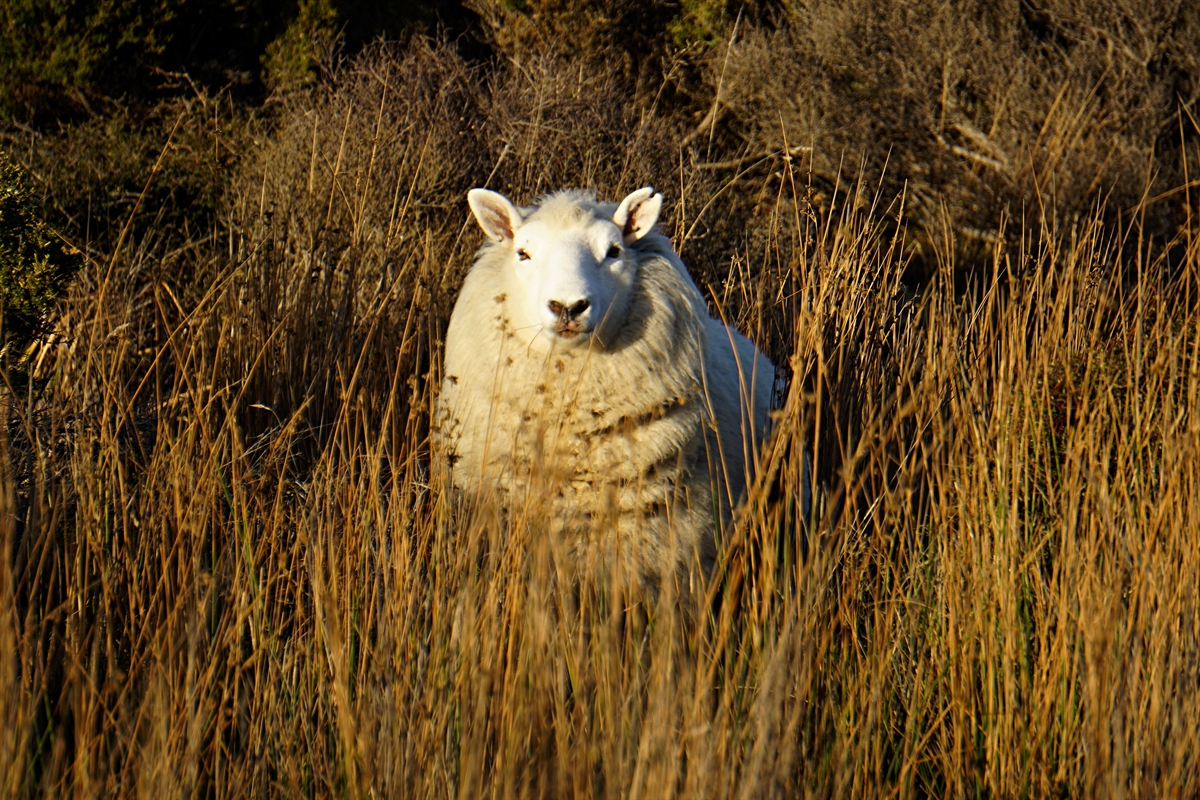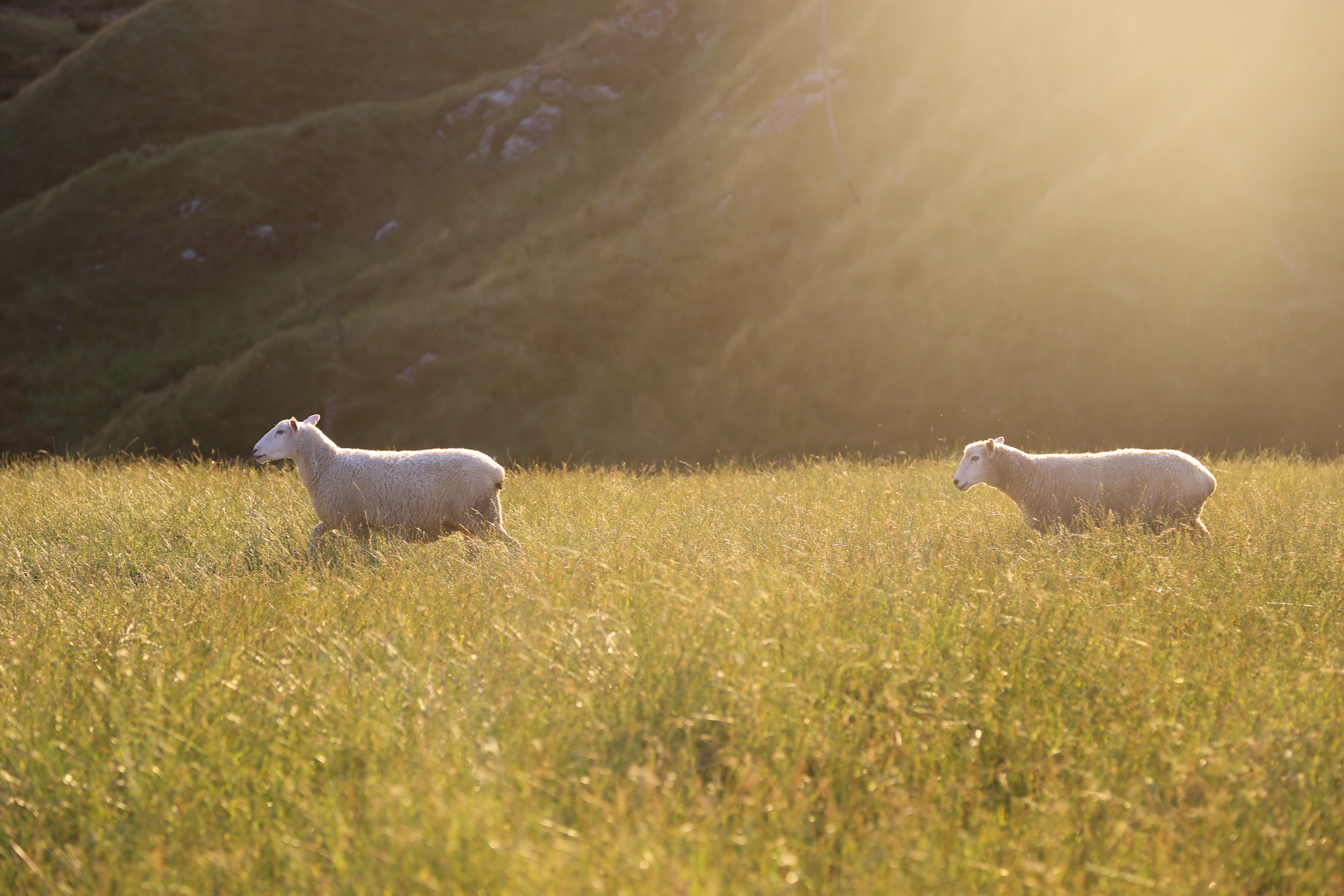The Heat is On: Managing sheep in a heatwave

When it comes to farming, the challenges rarely stop coming, and more often than not, they’re related to our weather. Battling the elements is just what we do – right?
For sheep farmers globally, extreme heat is a real concern - with the impact on available grazing and the risk of heat stress and flystrike just some of the major worries.
Mitigating these risks is something that takes practice, skill and well-considered husbandry, so we’ve compiled a few tips and ‘best practices’ to help you keep your flock in fine fettle as temperatures soar.
How does the hot weather affect your sheep flock?
With extreme heat, the wellbeing of sheep is impacted both directly (by the heat) and indirectly (through the impact of the heat on their environment).
These include reduced availability of grazing due to the heat and dry ground stalling growth and the subsequent need for supplementary feeding, as well as reduced water availability (particularly in remote and extreme situations). These factors can have a major impact on the body condition score (BCS) of sheep and the productivity and profitability of a flock. Fly problems are also a huge probability, so it’s imperative to keep an eye out for the signs of flystrike in your flock.
Signs of flystrike
- Discoloured, moist or greasy appearing wool.
- Agitation
- Bad odour
- Presence of maggots in the wool
Extreme heat - what’s the stress?
In extreme temperatures, heat stress in sheep is a significant concern, with a very real risk of fatalities if signs are not recognised early and steps taken to reduce the risks. Fatalities and extremes aside, high temperatures will also affect feed intake, growth rates, fertility and conception rates, leading to a knock-on impact on productivity the following breeding season.
So, what steps can you take to combat the effects of extreme heat upon feed intakes?
- Get lambs off ewes as early as possible (only if they’re ready to wean, of course) to reduce pressure on ewes and your available grazing
- Feed forage at cooler times of day to counter the effects of reduced feeding and minimise body heat production in the heat of the day
- Introduce supplementary feeding gradually and before it becomes critical, in order to extend the forage and reduce the risk of acidosis (supplementation with an energy block can reduce the necessary grass intake required for maintenance to 3.57kg). Source.
Tip: If your grass is dry, supplementing ewes and lambs that are weaning with an energy block can reduce the amount of forage needed to sustain your flock. This means that the same pasture that is usually required to feed one ewe with twins can support four ewes without their lambs. Source.

Signs of heat stress in sheep
Heat stress is caused when sheep are unable to maintain the balance between body heat production and body heat loss – overwhelming the narrow limits of the sheep’s ideal body temperature range of around 39°C.
Signs include:
- Open mouth breathing (panting), head extended and tongue protruding with profuse salivation
- Refusal to lie down
- Increased respiration rate, which is especially serious when accompanied by deep flank movements
- Rectal temperature above 41°C
- Huddling
- Wetting head in a water trough in a bid to splash body to cool down
- Front legs held in a wide stance in a bid to increase lung volume (a sign of advanced heat stress)
How can you reduce the impact of extreme heat and the occurrence of heat stress in sheep?
- Provide grazing sheep with access to sufficient shade in the form of hedges and trees, or the shelter of a barn
- Reduce the movement, handling and transportation of sheep during hot spells – keeping such activities to early mornings or late evenings where possible. Where movement and confinement of sheep is vital – for shearing, vaccination, worming and transportation, ensure that animals are moved over shorter distances and penned in smaller groups. Moving from higher to lower ground can come with higher risks of disease such as pasteurellosis as well as heat stress, so make such moves slowly
- Pay close attention to lambs as they are significantly more susceptible to heat stress than adult sheep
- Maintain a ready and abundant supply of clean, fresh drinking water in every field – ideally close to sources of shade to reduce the distance your sheep have to travel to drink and thus their energy requirement. Ensure indoor water supplies are sited to avoid soiling and that a capacity of 5 litres per ewe is provided
- If you chose to house your flock, ensure barns are well ventilated to cope with all conditions – particularly the milder, ‘airless’ days. In addition, ensure that space allowances are increased by reducing group sizes to 30-50 ewes per pen
- Avoid feeding housed ewes outdoors if there is a risk of them getting wet as this can lead to high humidity indoors once they are bought in and increase the risk of heat stress
- Maintain good drainage and ventilation in areas of housing prone to wetting to reduce the occurrence of heat stress caused by high humidity
Did you know? Wool protects sheep from extreme heat as well as the cold. Research shows that sheep with a one-inch fleece are more comfortable than their more closely shorn counterparts, with the wool fibres aiding the more rapid dissipation of heat. Consider shearing earlier in the season to allow for some growth before the typically hotter summer months.

Coping with extreme heat in sunny climates
For countries like South Africa and Australia, droughts are a regular occurrence - with parts of South Africa affected at an average rate of almost once every five years. The sheep-farming capital of the world, New Zealand is also prone to extreme heat in the summertime. So, what learnings can others make from our friends in these countries?
Early weaning of lambs
Prof Tertius Brand, a scientist in animal nutrition at the Elsenburg Agricultural Training Institute in South Africa states, “A study found that the early weaning of lambs at about nine weeks and feeding of lambs for six weeks can save a farmer about 30% in feed costs to the ewes,”
More insight into Brand’s findings on the correlation between ewe nutrition and productivity can be found here >>>
In New Zealand, weaning lambs before the land gets too dry is considered a priority, as Dr Clive Dalton says, “You can’t grow lambs on dead grass”. He even goes so far as to promote the selling of late-born, small lambs early, under a ‘cut your losses’ philosophy, in order to protect the productivity of the ewe.
More summer sheep tips from New Zealand can be found here >>>
Shearing
The Sheep Welfare Code in New Zealand states that wool needs to be shorn when it is no longer than 100mm long. In some wool-heavy flocks, this prompts twice-yearly shearing.
Land Management
In southwest Western Australia, confinement feeding is commonplace when feed availability and water are scarce. This makes feeding and management much more efficient, enabling the close monitoring of the flock and feeding according to BCS with minimal wastage. The benefits to the wider grazing area include reduced erosion and quicker recovery post-drought.
More about making good sheep management decisions in Australia can be found here >>>.

Lots to learn
As in any aspect of farming, there’s always more for sheep farmers to learn, and looking into global practices only serves to extend our knowledge and arm us to better care for our flocks. So, here at Lamlac, we’re always on the lookout for new insight and information for us to share with the wider sheep farming community.